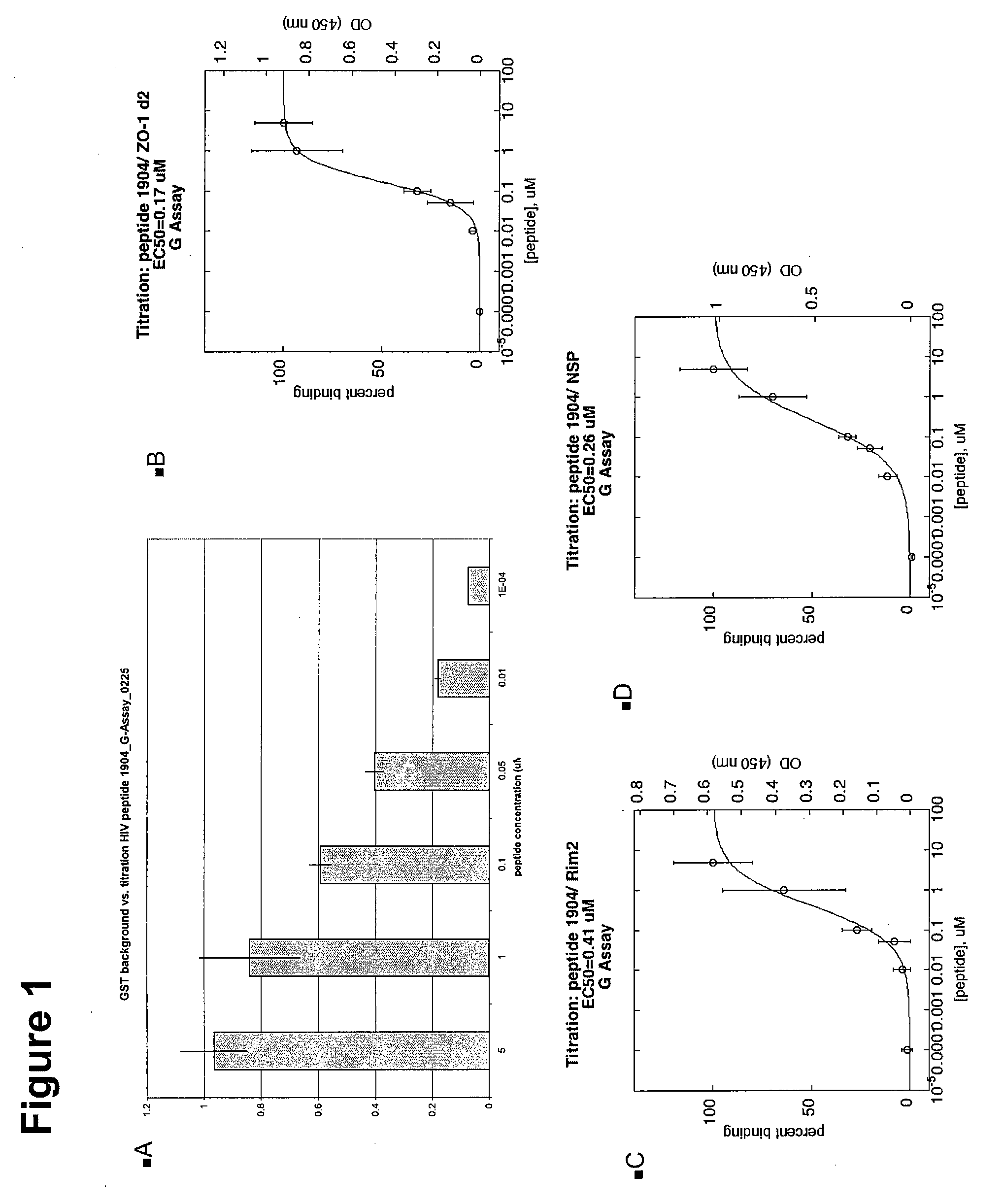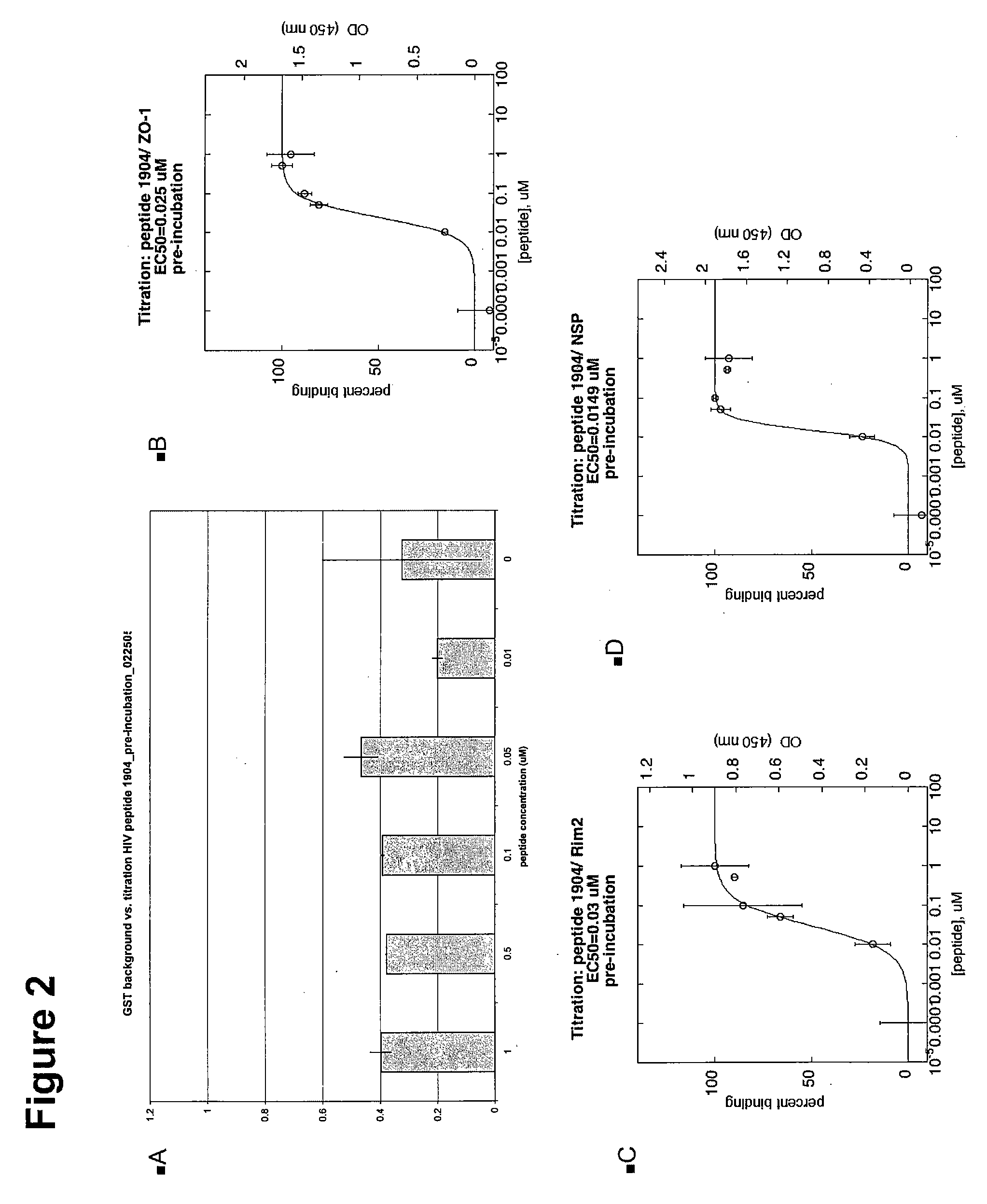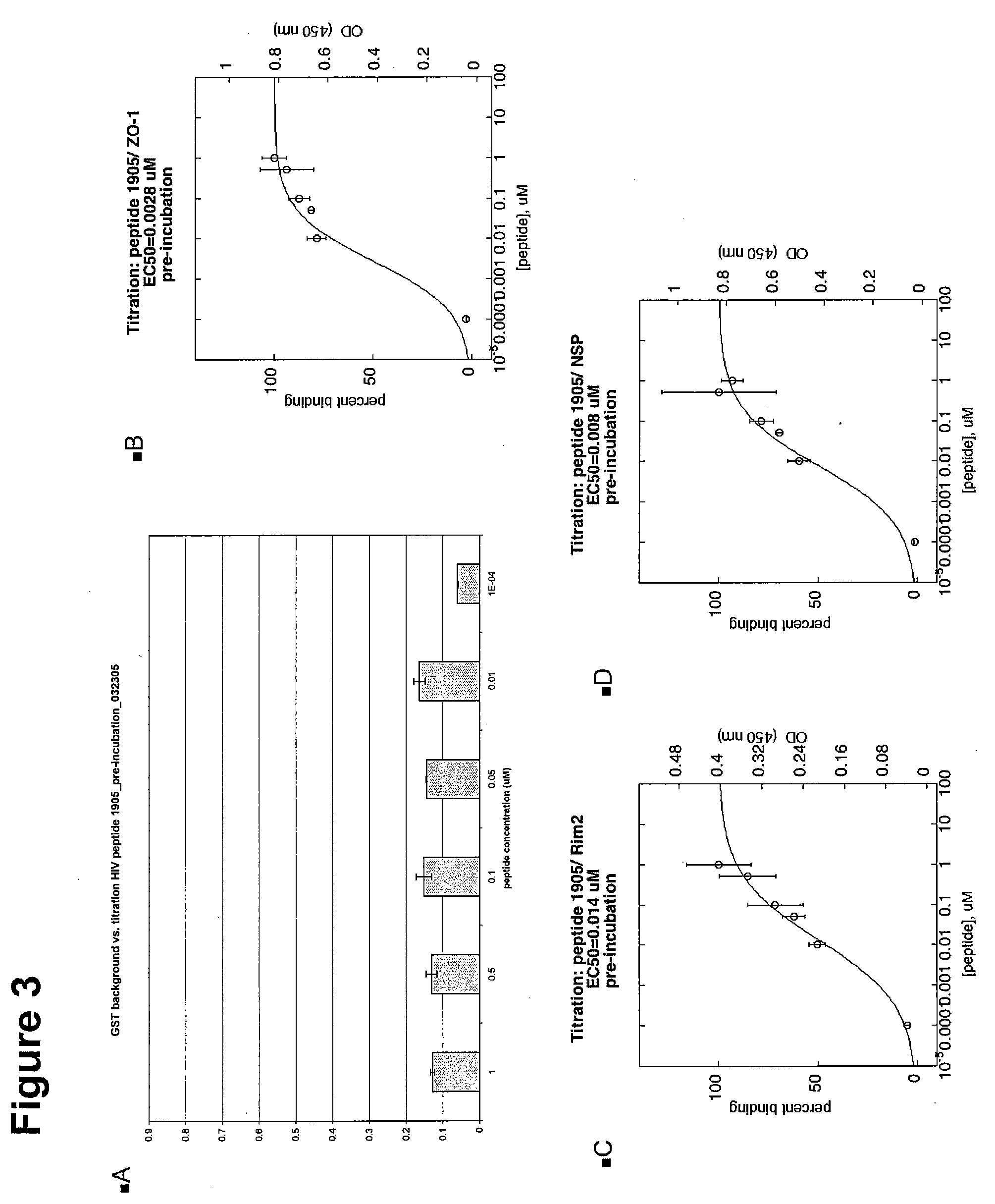Methods and compositions for diagnosis and treatment of viral and bacterial infections
- Summary
- Abstract
- Description
- Claims
- Application Information
AI Technical Summary
Benefits of technology
Problems solved by technology
Method used
Image
Examples
example 1
PDZ Analysis
[0311] This example describes the binding of PDZ proteins to various bacterial and viral PL motifs. The PDZ proteins were assessed using a modified ELISA. Briefly, a GST-PDZ fusion was produced that contained the entire PDZ domain of the PDZ proteins. See Tables 1 and 2 for specific PDZ / PL pairs (Table 1) and PDZ proteins sequences (Table 2) that were used in the analysis. In addition, biotinylated peptides corresponding to the C-terminal 20 amino acids of various virus and bacterial strain PL proteins were synthesized and purified by HPLC. Binding between these entities was detected through the “G” Assay, a colorimetric assay using avidin-HRP to bind the biotin and a peroxidase substrate. The sequences of the PL proteins from the specific virus and bacteria are shown Table 1.
[0312] Binding of PL protein PLs (or C terminus) to human PDZ proteins was determined using both (i) biotinylated synthetic 20-mer peptides selected to mimic certain of the PL protein PL (or C ter...
example 2
[0314] Two different types of ELISA assays were used to test the HIV Peptides 1904 and 1905. The primary MATRIX screen against all PDZ proteins in the library was performed under pre-incubation conditions, which are a modification of the G assay. A pre-incubation assay incubates the peptide with the HRP-streptavidin before addition of the mixture to the PDZ-coated plate. The subsequent titrations of the peptide against the PDZs of interest were performed under normal ELISA G assay conditions. In normal conditions the peptide is incubated on the PDZ coated plate before the later addition of the HRP-streptavidin. The reagents and supplies for both assays are listed below, as well as the two different protocols.
[0315] The PRISM Matrix ELISA G Assay was used for titrations. The reagents and supplies used were: Nunc Maxisorp 96 well Immuno-plate, Nunc cat#62409-002,PBS pH 7.4 (phosphate buffered saline, 8g NaCl, 0.29g KCl, 1.44g Na2HPO4, 0.24g KH2PO4, add H...
example 3
HIV-1 Peptide 1904 Binding to PDZ Proteins
[0323]FIGS. 1 and 2 show the binding analysis for Peptide 1904 from HIV-1 with the sequence YGRKKRRQRRRRQGLERILL (SEQ ID NO:274). Peptide 1904 has a PL corresponding to RILL (SEQ ID NO:243). The analysis was done using a number of GST PDZ fusions. After a PDZ proteins was identified to bind to the peptide, a titration was performed to determine the EC50. FIGS. 1 and 2 are experiments, performed using two different assays, the regular G assay and modified G assay for the same 3 GST / PDZ fusions. FIG. 1A shows the GST background versus titration of HIV peptide 1904 in the G-Assay. The x-axis shows the background level. The y-axis shows the peptide concentration in μM. FIG. 1B shows the titration analysis for binding to the PDZ protein ZO-1 d2 (domain 2) to have an EC50 of 0.17 μM. FIG. 1 C shows the titration analysis for binding to the PDZ protein Rim2 to have an EC50 of 0.41 μM. FIG. 1D shows the titration analysis for binding to the PDZ pro...
PUM
| Property | Measurement | Unit |
|---|---|---|
| Pressure | aaaaa | aaaaa |
Abstract
Description
Claims
Application Information
 Login to View More
Login to View More - R&D
- Intellectual Property
- Life Sciences
- Materials
- Tech Scout
- Unparalleled Data Quality
- Higher Quality Content
- 60% Fewer Hallucinations
Browse by: Latest US Patents, China's latest patents, Technical Efficacy Thesaurus, Application Domain, Technology Topic, Popular Technical Reports.
© 2025 PatSnap. All rights reserved.Legal|Privacy policy|Modern Slavery Act Transparency Statement|Sitemap|About US| Contact US: help@patsnap.com



